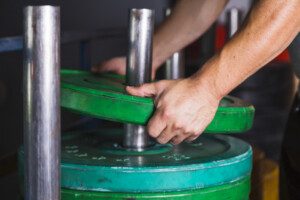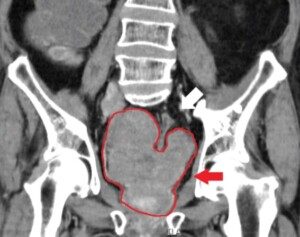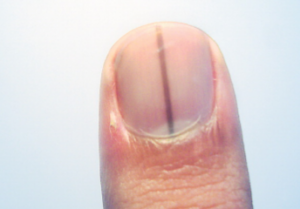It’s about time that science catch up to what many personal trainers have known all along: Strong muscles are highly protective against type 2 diabetes.
If you’re worried about developing type 2 diabetes, even if you have a greater genetic risk of this happening, training your muscles to get strong can yield a 40% less chance of developing this disease.
This is the result of a large-scale study that examined how muscle strength impacts the odds of developing type 2 diabetes.
In T2D, the pancreas may produce sufficient amounts of insulin, but as one type 2 diabetic coworker of mine once said, “My body doesn’t know what the hell to do with it.”
The results of the study from researchers at the School of Public Health, LKS Faculty of Medicine at the University of Hong Kong suggest that greater muscle strength is linked to a 40% less risk of developing T2D, regardless of one’s inherited risk.
In T2D, there is elevated blood sugar due to the body’s resistance to insulin (or inability to produce enough of it).
Both genetic makeup and everyday habits like diet and exercise play a role in determining whether someone develops T2D.
It’s not new news that muscle strength reduces the risk of type 2 diabetes.
What wasn’t known, however, was if the benefit of strength training also applied equally to people with higher levels of genetic risk.
How the Study Was Done
The team analyzed information from 141,848 white British participants from the UK Biobank, a large long-term health project that includes detailed health and genetic data from over half a million people.
These individuals did not have T2D when the study began.
Researchers measured muscle strength using grip strength tests and estimated each person’s genetic risk for T2D using a set of 138 known genetic markers.
Participants were tracked for more than seven years, during which 4,743 developed T2D.
The analysis showed that people with higher muscle strength had a 44% lower likelihood of developing type 2 diabetes compared to those with lower muscle strength.
This remained true even after adjusting for genetic risk and other factors that could affect diabetes risk.
Interestingly, the study also found that stronger muscle strength seemed to help reduce the effect of having a high genetic likelihood of developing T2D.
In fact, people with high muscle strength but also high genetic risk had a lower chance of getting T2D than those with low or medium genetic risk but poor muscle strength.
This is the first study of its kind to look at the relationship between muscle strength, inherited risk for T2D and how they combine to influence the possibility of developing the disease over time.
Get Strong, Even if You’re “Weak” and Older

Freepik
The paper emphasizes that maintaining or increasing muscle strength can be useful for preventing T2D.
This is especially true for people of middle age and older, regardless of genetic background.
Older age is a risk factor for developing T2D.
Middle and even retirement age are no excuses for avoiding lifting weights to strengthen muscles, and this goes for women, not just men.

Women need to build strong muscles as much as men do: ALL bodies should be strong. Freepik
Grip Strength Tests
It stands to reason that anyone who’s trained their muscles to be strong would score quite well with a grip strength test.
That’s because many weight training exercises strengthen the grip.
A strong grip is an invariable, predictable outcome of weightlifting.
Someone with an impressive grip but who’s never lifted weights has very likely been regularly involved in an activity that produces enhanced gripping ability.
Chances are, that other activity has given them strong muscles throughout their body.
I also need to point out that if you have a “strong” handshake, this doesn’t mean that the major muscles of your body (legs, back, chest) are objectively strong.
A person with a strong handshake who doesn’t work out still needs to do muscle strengthening exercises.
Sticking a grip device in your hand and squeezing it while you watch two hours of TV on your sofa every day will NOT build the strong muscles throughout your body that could stave off type 2 diabetes.
It’ll strengthen only the muscles in your forearm.
If you want the benefit of strong muscles to help prevent developing T2D, you must take up weight workouts.
In fact, simply loading and unloading barbells will increase grip strength.
Hoisting around heavy plates onto and off of equipment works the muscles of the back, shoulders, arms and core.
- The study doesn’t say you must bulk up or acquire big muscles.
- It speaks only of strong muscles.
- You can have strong muscles without looking like a bodybuilder.
- Obesity nor thinness do not preclude a strength building regimen.
- Smokers as well can build strong muscle.
 Lorra Garrick is a former personal trainer certified by the American Council on Exercise. At Bally Total Fitness, where she was also a group fitness instructor, she trained clients of all ages and abilities for fat loss and maintaining it, muscle and strength building, fitness, and improved cardiovascular and overall health.
Lorra Garrick is a former personal trainer certified by the American Council on Exercise. At Bally Total Fitness, where she was also a group fitness instructor, she trained clients of all ages and abilities for fat loss and maintaining it, muscle and strength building, fitness, and improved cardiovascular and overall health.
.









































